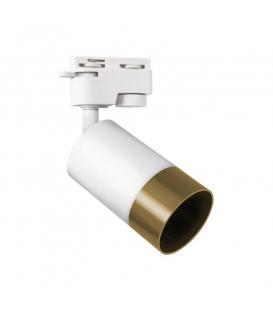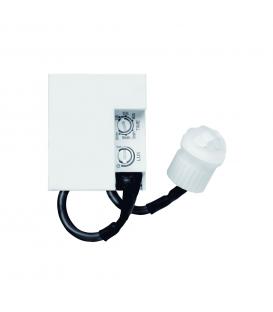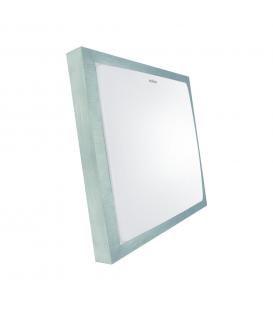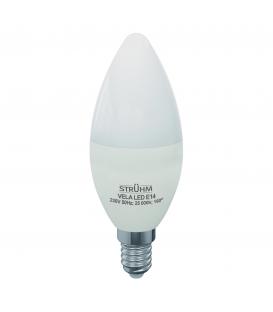Light and twilight sensors for automatic lighting

A light and dusk sensor (also called a twilight sensor) is an electronic component that allows a light circuit to be switched on automatically when natural light in a specific environment decreases. As soon as the measured brightness drops below a set value, the light is automatically switched on, and when the brightness increases again, it is switched off again! This is not only energy saving, but also extremely convenient!
With a twilight sensor lamp, you always have light in the dark.
Thanks to the twilight sensor, the lamp or other electrical device does not run unnecessarily and energy consumption is reduced. The main advantage is that you no longer have to set the winter and summer time. Once the light sensor lamp is installed, you don't have to worry about it anymore!
You can use the twilight sensor for all kinds of electrical appliances, ambient temperature sensor, ice display, water heater, oil pump and so on. The products can control light with sound wave detection circuitry, all of which contributes to the stability of the dusk sensor.
They are suitable for automatic lighting of corridors, hallways, bathrooms, basements, warehouses, garages and other rooms. Twilight sensors have a wide range of applications, such as in the bathroom, kitchen or other rooms where monitoring sensitivity is normal, you can use a twilight sensor to control the switching on and off of the light. It will turn on when the surroundings become dark and the sensor light will automatically turn off.
Here's how light and twilight sensors work:
Principle of Operation: Light sensors are typically made using a semiconductor material whose resistance changes with variations in light exposure. The most common material used is cadmium sulfide (CdS). When light falls on the sensor, the number of charge carriers in the semiconductor material increases, leading to a decrease in resistance. Conversely, when the light decreases, the resistance increases.
Circuit Configuration: Light sensors are usually used in a voltage divider circuit configuration. They are connected in series with a fixed resistor, forming a voltage divider. The voltage across the light sensor changes proportionally with the intensity of light falling on it.
Applications:
- Automatic Lighting: Light sensors are often used in outdoor lighting systems, streetlights, and indoor lighting systems to adjust the brightness based on the ambient light conditions. This helps save energy by only activating lights when they are needed.
- Photography: Cameras and smartphones use light sensors to adjust settings such as shutter speed and ISO sensitivity for optimal image quality in different lighting conditions.
- Security Systems: Light sensors can be used in security systems to detect unauthorized access by measuring changes in light caused by movement.
- Greenhouses: Light sensors are employed in agriculture to monitor and control artificial lighting in greenhouses, promoting plant growth.
- Automotive: Twilight sensors are used in cars to automatically control headlights and dashboard illumination based on external lighting conditions.
- Consumer Electronics: Devices like laptops, tablets, and smartphones can use light sensors to adjust the screen brightness based on ambient light, providing a comfortable viewing experience and conserving battery power.
- Weather Stations: Light sensors are used in weather stations to measure solar radiation, which is essential for understanding weather patterns and climate.
- Industrial Automation: In industrial settings, light sensors can be used for quality control, sorting, and product counting based on light-sensitive characteristics.
Advantages:
- Energy Efficiency: Light sensors help conserve energy by only activating lighting systems when necessary.
- Convenience: Devices equipped with light sensors can adjust their settings automatically to provide a better user experience.
- Cost-Effective: Light sensors are relatively inexpensive components, making them suitable for various applications.
Limitations:
- Spectral Response: Light sensors may have different spectral responses, meaning they may not accurately measure light levels across all wavelengths.
- Response Time: Some light sensors might have slower response times, which could affect their usability in applications that require rapid adjustments.
- Calibration: Depending on the specific application, light sensors might require calibration to ensure accurate measurements.
Overall, light and twilight sensors play a crucial role in modern technology by enabling automatic adjustments, energy savings, and improved user experiences in various devices and systems.
Browse our "Light and twilight sensors" collection
Light and Twilight Sensors for Automatic Lighting
- 3,86 €Enhance your outdoor lighting with the Twilight and Light Sensor ELF 10A. Experience automatic illumination at dusk...
- 7,90 €Enhance your outdoor lighting with the Twilight and Light Sensor ELF 15A. Experience automatic illumination at dusk...
- 4,72 €Enhance your outdoor lighting with the Twilight and Light Sensor ELF 25A. Experience automatic illumination at dusk...
- 2,94 €Enhance your outdoor lighting with the Twilight and Light Sensor ELF 6A. Experience automatic illumination at dusk...










